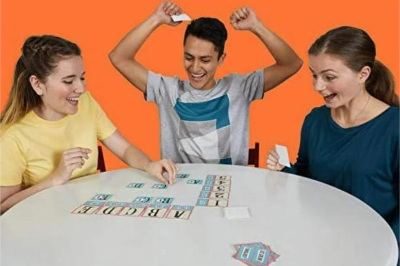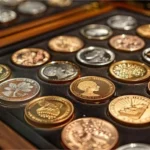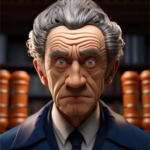Joyous Laughter NYT Crossword lovers are familiar with the daily challenge of completing a new crossword puzzle. The New York Times Crossword is not just a game that many solvers expect and enjoy the appearance of a daily crossword puzzle. Over the years, the NYT crossword has become a source of entertainment, knowledge, and, above all, laughter for puzzle lovers around the world.
Strategies and tactics used and history of the NYT Crossword
The great influence felt in the NYT crossword is still felt today and it all started in 1942 with the publication of the first crossword puzzle in the New York Times newspaper. The Times originally did not want to host crosswords because it did not see their popularity as a trend. Although the Times ban was in place, the enormous popularity of puzzles during World War II caused the organization to withdraw its decision as people sought lighthearted entertainment. The first NYT crossword was published on February 15, 1942, and from that moment on it has been one of the prominent features of The New York Times.
The NYT crossword puzzle became more specialized and difficult primarily under the direction of several key editors, including Margaret Farrer, who defined many of the current methods of crossword construction, and Will Shortz, who edited the crossword puzzle since 1993. have been. Like many crossword puzzles, the term shortz is characterized by sticking to tradition and changing the rules just enough to keep the game interesting for everyone.
The Appeal of the NYT Crossword
There’s nothing quite like the NYT crossword and the laughs solvers get from something that’s interesting, culturally relevant, and spans a variety of difficulty levels. Depending on their difficulty, the puzzles start at an accessible level during the week and ramp up to their peak on Saturday. As The Times Crossword is bigger than any other crossword except The Sunday Times, The Weekend Puzzle, while not the most challenging, is bigger and comes with a different theme each week.
So, the NYT crossword helps to pass the time with pleasure and increase the necessary knowledge set. Solvers usually encounter new words, trends or topics, jokes, and casual conversations. Crossword puzzles help develop the ability to think outside the box and see patterns that are not limited to crossword puzzles but are useful in everyday life. The clues provided are always clever and cheeky and the breaks they provide will make New York Times crossword lovers laugh.
Solving strategies and techniques
It turns out that NYT crossword enthusiasts create many styles that will help them solve these puzzles efficiently and make people laugh. If you are a beginner, it is advisable to start by solving Monday puzzles as they are relatively easy. Such solvers may move from the beginning of the week when relatively easy puzzles are posted to the end when difficult ones are posted. Here are some tips to enhance your solving experience: Here are some tips to enhance your solving experience:
Start with easy hints: Start by putting the answers you remember first. This will generate some useful prior knowledge and can be used to make reasonable guesses on more difficult clues.
Look for fill-in-the-blank clues: They’re usually the easiest to get and get the best letters to cross with other words.
Consider the theme: Themed puzzles can contain some kind of message based on a particular topic that can help solve them. From the floor, the theme can be easily understood in all the answers unlike the ones below.
Think of wordplay: a large number of them are based on puns, homophones, and other similar tricks of word use. Don’t focus on reading the indicator directly.
Use crossings: When crossing answers, letters can help you come up with the correct clues in cases where the clues are difficult to figure out. If so, one can try to complete the responses of the surrounding cells to get some sort of clue.
A community of solvers
NYT crossword puzzles also start with the social aspect of the solvers. People at the NYT Crossword are people who know how to solve a puzzle or at least like to try. This communion is done through online platforms, closed and open groups, and meetings on social networks. Websites such as Rex Parker does the NYT Crossword Puzzle and Wordplay on the New York Times website provide commentary, advice, and discussion about the current day’s crossword.

This community can improve the problem-solving experience. Interacting with other solvers helps you discuss solutions and strategies, grandstand enthusiastically if necessary, and even discuss some clues. The unifying factor, people’s passion for crosswords brings joy to everyone and laughter to the New York Times crossword fanatics.
The role of technology
Thus, in recent years, technological advancements have contributed a great deal to sharing moments of joy with NYT crossword puzzles with more people. The New York Times Crossword app enables its users to complete puzzles on their smartphones or tablets, allowing solvers to play at their own time each day. Some of the constants of the app include hints, an option to check answers, and a series that challenges the solver to solve as many as they can at once.
Regarding the social aspect, online solutions also provide new forms for communication. Players can challenge their friends, as well as participate in tournaments that are maintained over the Internet or cooperate with other players in real-time. These technologies have also contributed to making the NYT crossword more user-friendly and making the form a puzzle in the modern world.
On the effects of the NYT Crossword
The required NYT crossword should not only generate laughter; He should be a mind opener and a social activist. This test proves that doing crosswords can improve brain power, increase vocabulary, and delay dementia in the elderly. Challenging one’s mind, it relieves stress and strengthens the cognitive functions of the human brain.
Additionally, the NYT crossword can boost morale and help players feel good about themselves. Solving a difficult problem is satisfying and helps boost self-esteem. Crosswords can also be seen simply as a daily activity that forms a routine in a person’s daily life, which is necessary to be healthy.
Memorable puzzles and clues
Light-hearted My NYT crossword enthusiasts often discuss great NYT results and special clues. Each may be unusual because of the chosen subject matter, broad setting, or context associated with modern-day events. For example, an Election Day crossword puzzle published by Jeremiah Farrell in the Syracuse Post Standard in November 1996 had two possible solutions: Clinton and BOB DOLE depending on the interpretation of the clues, making it one of the largest ever. Considered as one of the solutions.
References that deal with intellect, creativity, or different modes of interpretation are most appreciated in this case. Rather than presenting a clear solution in plain English, this strategy forces solvers into uncharted territory of creativity and defines the work of the constructor. Spontaneous moments of general fun and hilarity are loved by NYT crossword devotees.
Conclusion
The combination of NYT crossword puzzles and gleeful laughter is a testament to how popular this form of entertainment is to this day. From the simplicity of the puzzle to what is today the NYT crossword – the pride of the New York Times and a cultural phenomenon – the puzzle has entertained generations of verbally challenged people. No matter how long you’ve been solving crosswords or if it’s your first time, the NYT crossword is a great source of good laughs and a healthy brain challenge. New technology and the addition of many more people to the community of solvers will undoubtedly help the NYT crossword become a popular practice for many years to come.
FAQs
What complex lends itself to such granular, passionate attention to the crossword puzzle?
The NYT crossword puzzle is well designed with good themes and gags and increases its challenge from easy to hard between Monday and Saturday. Here, the creators have added hesitation, cultural allusion educational content, and difficult cues that distinguish it from other words.
How many letters must NYT crossword novices use to solve the puzzle?
Newbies should start with the Monday puzzles as they are relatively easy. Some tips that solvers can follow to instill confidence in them are to solve only blank clues, check crossings and last but not least stay alert on the theme.








Leave a Reply